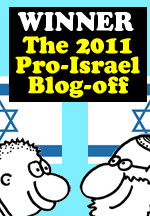The root of the Arab-Israeli conflict is not the size of the country, but Israel’s very existence – even Tel Aviv and Jerusalem are seen as settlements in the Palestinian narrative.
The Palestinian Authority views “1948 settlements” as the root of the conflict, and therefore in the media, in mosques, in textbooks and at every other opportunity the Authority refers to the 1948 borders, including Jerusalem’s Jewish neighborhoods, as settlements. The Palestinian Authority doesn’t make the distinction between Northern Tel Aviv, which it calls Sheikh Munis, and the settlement Betar, which it considers to be the village Battir.
The fact is that the areas currently called hitnachaluyot, or settlements, were founded after the Six Day War in 1967, well after the founding of the PLO in 1964, the wars in 1948 and 1956, the Hebron Massacre and banishment of the Jews from Gaza in 1929, the uprooting of Gush Etzion’s communities and the massacre of its residents and the destruction of Kfar Darom in 1948.
Prior to Israel's declaration of independence, the British Mandate and the United Nations declared that Jews have the right to settle in Israel, including Judea and Samaria.
According to the UN the last governing body of Judea and Samaria was the British mandate, which designated the region for a Jewish nation. The British mandate was discussed at the San Remo conference on April 24th 1920, put into writing in the Treaty of Sèvres on August 10th 1920, and approved by the UN on July 24th 1922. According to section 94 and 95 of Treaty of Sèvres “The mandate of Palestine (Israel) was created for the Jewish people”. According to section 6 of the mandate, Jews have the right to settle in any part of Israel, including Judea and Samaria. The mandate document calls for the “creation of political , administrative and economic conditions that will ensure the founding of a Jewish nation”.
The settlements reestablish historical Jewish settlements, and do not uproot Arab residents in the process
The Palestinians claim that Jewish settlement in Judea and Samaria is in breach of article 49, paragraph 6 of the Geneva Convention, which prohibits occupying forces from deporting local populations or transferring parts of their own civilian population into the occupied territory. As opposed to the historical reference of article 49 (Germany settled in conquered territories and forcefully uprooted local residents), the Judea and Samaria settlements are reestablishing Jewish towns in the area. In addition, the settlements do not uproot local Arab population. Despite the fact that article 52 of the Hague Agreement regulations permits the expropriation of private land by the government, Israel avoids doing so in Judea and Samaria.
Most Arab villages and towns in Judea and Samaria have biblical names proving Jewish roots in Judea and Samaria
If asked “who was there first?” you can name a number of Arab towns that were founded over ancient Jewish towns, for example:
- Bethlehem is where King David was born and is mentioned 44 times in the Old Testament.
- Beit Jala is (the neighborhood) Gilo, where Sennacherib was camped during his siege of Jerusalem.
- Hebron is King David’s first capital, the burial site of the Jewish nation’s three founding fathers, and three of the four mothers.
- The Arab village Mukhmas is (the settlement) Michmash, the site of King Saul’s palace and the residence of Jonathan Apphus of the Maccabees.
- The Arab village Seilun is (the settlement) Shiloh, the location of Joshua’s altar, the Ark of the Covenant, and where Samuel the Prophet was active.
- The Arab village Teqoa is (the settlement) Tekoa, the birthplace of Amos the Prophet
- The Arab village Dura is (the settlement) Adoraim from the days of King Rehoboam and the Maccabees.
- The Arab village Anata is (the settlement) Anathoth, where the prophet Jeremiah lived.
- The Arab village Battir is (the settlement) Betar, the location of a great battle in the Bar-Kokhba revolt against the Romans, and part of Gush Etzion whose Jewish residents were slaughtered and cast out in the ‘20s, ‘30s and '40s.
- The village Hor is (the settlement) Beit Horon, where Judas Maccabeus defeated Nicanor. The Arab village Beitin Hor is (the settlement) Beit El, where the Ark of the Covenant was kept, Samuel the Prophet’s court was held, the location of Jacob’s dream and the second place where Abraham stopped in his journey.
The difference between peaceful coexistence and an obstacles to peace
- Some claim that the 300,000 Jews (17%) living alongside 1.5 million Arabs in Judea and Samaria are an obstacle to peace. Can we forget that 1.4 million Arabs (20%) live side by side with 6 million Jews within the Green Line (i.e., west of the Green Line) – can one side be open to peaceful coexistence, but not the other?
- Dozens of Jewish buildings constructed in Judea and Samaria have no permit and are considered an obstacle to peace. There are also approximately 100,000 illegal Arab homes within the Green Line (including 1100 illegal houses that are built every year in Jerusalem) and an even greater number in Judea and Samaria...
- When people tell you that uprooting Arab towns within the Green Line is a violation of human rights, ask how uprooting Jewish towns in Judea and Samaria values human rights?
And yet, Israel uprooted 25 Jewish settlements in Gaza and Samaria, in an overture towards peace
Remind your friends that, in spite of our legal and historic rights, in September 2005 Israel uprooted 25 Jewish settlements in Gaza and Samaria, taking a significant step towards a peace treaty with the Palestinians. Unfortunately, this was seen by the Palestinians as a show of weakness and the breaking of Israeli stamina. Since then production, smuggling and launching of rockets towards Negev towns has only escalated. Hamas has only gotten stronger in Gaza, and two wars have since broken out: the second Lebanon War, and Operation Cast Lead (a.k.a. the Gaza War) which led to the Goldstone report and an increase in international pressure on Israel, more exacting demands by the Arabs, and painful injustice to the Jews who were uprooted from their homes. (source)






